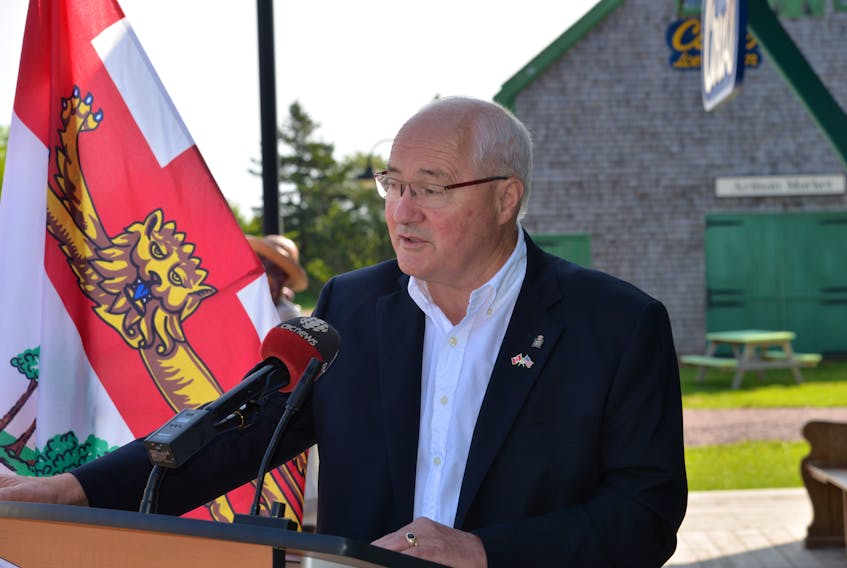CAVENDISH, P.E.I. — Eligible seasonal workers on P.E.I. got some financial help on Monday with five weeks of extra Employment Insurance benefits to hold them over until the start of the work season as well as funding to help them get enough hours to qualify for benefits.
The five weeks of additional EI benefits are part of a new, two-year pilot project. The federal government is providing $189 million to 13 regions in Canada for the project, which is available to eligible seasonal workers that started a claim between Aug. 5, 2018, and May 30, 2020.
RELATED: Ottawa announces $189M to extend employment insurance for seasonal workers
The federal government is also providing $41 million over two years so the provinces and territories can work with employers to provide skills training, wage subsidies and help employees get enough hours to qualify for EI.
Wayne Easter, MP for Malpeque, was in Cavendish Monday to announce the funding changes.
Easter said it is a “contradiction of an improving economy” that seasonal workers on the Island are falling short of EI hours as well as falling short of money, or the so-called “black hole” gap, before the start of the season.
“The economy improves. There’s more work available. And, as a result, the formula triggers the higher numbers to gain Employment Insurance,” said Easter. “Seasonal categories are a different category. As a result of an improving economy, workers require more hours to draw EI, and they’re impacted personally.”
Sam Sanderson, general manager of the Construction Association of P.E.I., said that construction on the Island isn’t as seasonal as it used to be, but weather and severe winters can affect the season and impact workers.
The funding and support is especially important as the construction industry is trying to recruit more workers, and next year is expected to be the largest construction season in the Island’s history, said Sanderson.
“It’s great to have those safety nets in place, not only for construction, but for every seasonal worker on P.E.I.,” he said.
The funding announcement is part of the $230 million set aside in the 2018 federal budget to help seasonal workers.
To be eligible for the pilot project, a seasonal worker must start a benefit claim on P.E.I. between Aug. 5 of this year, and May 30, 2020; have had at least three EI claims in the past five years in which they received regular or fishing benefits; and at least two of those claims were started around the same time of year.
Besides the two regions on P.E.I. (in Charlottetown or outside Charlottetown), the other 11 targeted regions are in Quebec, Nova Scotia, New Brunswick, Newfoundland and Labrador (excluding St. John’s) and the Yukon (excluding Whitehorse). Of the estimated 51,000 seasonal workers in these targeted regions that the pilot project is expected to help, 2,600 reside on the Island.
According to the federal government’s website, the number of hours needed in Charlottetown to qualify for regular EI benefits (based on 7.1 per cent unemployment rate) is 630 hours. In rural areas, such as Tignish, North Rustico, Souris and Georgetown, the number of hours needed is 490 (based on an 11.7 per cent unemployment rate).









